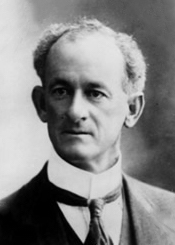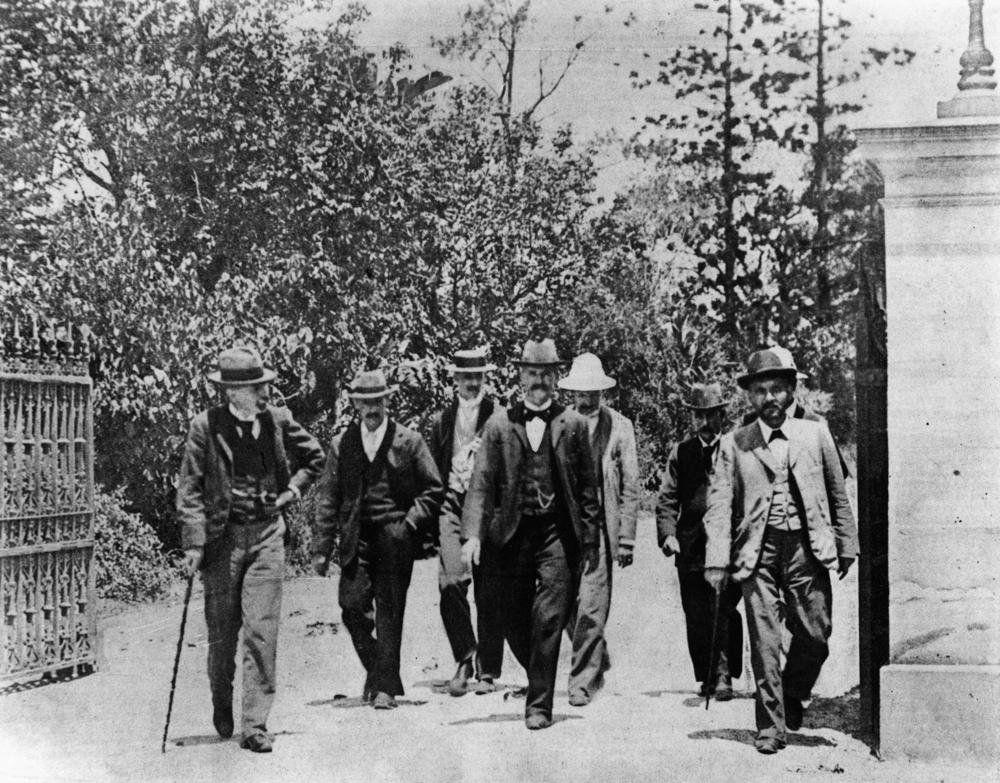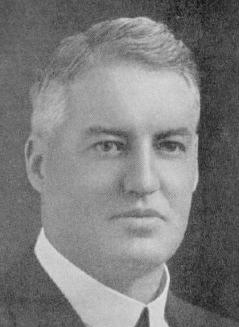|
Queensland United Party
The Queensland United Party was the name of the Queensland state branch of the Nationalist Party of Australia in the mid-1920s. Its members contested one state election under this name, the 1923 election, in which it saw limited electoral success. It was led by Charles Taylor, the MP for Windsor. The QUP gained 3 seats from its previous election result, and won a 10% swing to it in primary votes, but failed to defeat the incumbent Labor government led by Ted Theodore. Following the election, in 1925, the United Party merged with the Country Party to become the Country and Progressive National Party (or CPNP) to contest the next election. See also * 1923 Queensland state election * Nationalist Party of Australia * Australian Country Party (1920) The National Party of Australia, also known as The Nationals or The Nats, is an Australian political party. Traditionally representing graziers, farmers, and regional voters generally, it began as the Australian Country Par ... [...More Info...] [...Related Items...] OR: [Wikipedia] [Google] [Baidu] |
Queensland
) , nickname = Sunshine State , image_map = Queensland in Australia.svg , map_caption = Location of Queensland in Australia , subdivision_type = Country , subdivision_name = Australia , established_title = Before federation , established_date = Colony of Queensland , established_title2 = Separation from New South Wales , established_date2 = 6 June 1859 , established_title3 = Federation of Australia, Federation , established_date3 = 1 January 1901 , named_for = Queen Victoria , demonym = , capital = Brisbane , largest_city = capital , coordinates = , admin_center_type = Administration , admin_center = Local government areas of Queensland, 77 local government areas , leader_title1 = Monarchy of Australia, Monarch , leader_name1 = Charles III , leader_title2 = Governor of Queensland, Governor , leader_name2 = Jeannette Young , leader_title3 = Premier of Queensland, Premier , leader_name3 = Annastacia Palaszczuk (Australian Labor Party (Queensland Branch), AL ... [...More Info...] [...Related Items...] OR: [Wikipedia] [Google] [Baidu] |
Nationalist Party Of Australia
The Nationalist Party, also known as the National Party, was an Australian political party. It was formed on 17 February 1917 from a merger between the Commonwealth Liberal Party and the National Labor Party, the latter formed by Prime Minister Billy Hughes and his supporters after the 1916 Labor Party split over World War I conscription. The Nationalist Party was in government (from 1923 in coalition with the Country Party) until electoral defeat in 1929. From that time it was the main opposition to the Labor Party until it merged with pro-Joseph Lyons Labor defectors to form the United Australia Party (UAP) in 1931. The party is a direct ancestor of the Liberal Party of Australia, the main centre-right party in Australia. History In October 1915 the Australian Prime Minister, Andrew Fisher of the Australian Labor Party, retired; Billy Hughes was chosen unanimously by the Labor caucus to succeed him. Hughes was a strong supporter of Australia's participation in World W ... [...More Info...] [...Related Items...] OR: [Wikipedia] [Google] [Baidu] |
1923 Queensland State Election
Elections were held in the Australian state of Queensland on 12 May 1923 to elect the 72 members of the state's Legislative Assembly. The Labor government was seeking its fourth continuous term in office since the 1915 election; it would be Premier Ted Theodore's second election. Key dates Results : 475,957 electors were enrolled to vote at the election, but 2 Country Party seats ( Cooroora and Wide Bay), 1 United Party seat (Albert) and 1 Labor seat ( Barcoo) were unopposed. Seats changing party representation This table lists changes in party representation at the 1923 election. * Members listed in italics did not recontest their seats. * The United party member for Bulimba, Walter Barnes instead contested the new seat of Wynnum and won. * The Country party member for the abolished seat of Drayton, William Bebbington instead contested the seat of Rosewood and lost. * The United party member for the Kennedy, John Jones instead contested the seat of Queent ... [...More Info...] [...Related Items...] OR: [Wikipedia] [Google] [Baidu] |
Charles Taylor (Australian Politician)
Charles Taylor (24 March 1861 – 27 April 1944) was a member of the Queensland Legislative Assembly. He was born in Melbourne, Victoria, the son of the George Taylor and his wife Mary Albina (née Holder). After attending the Church of England school in Ballarat he was an agent for a produce firm in Sydney, before running a seed and produce agency in Brisbane. On 31 January 1884, Taylor married Emma Jane Skewes (died 1942)Family history research — births, deaths, marriages, and divorces. Retrieved 25 April 2016. in Ballarat and together had two sons and a daughter. He died in Brisbane in April 1944 ... [...More Info...] [...Related Items...] OR: [Wikipedia] [Google] [Baidu] |
Electoral District Of Windsor (Queensland)
Windsor was an electoral district of the Legislative Assembly in the Australian state of Queensland from 1912 to 1992. First created for the 1912 state election, the district was based in the northern suburbs of Brisbane, taking in areas north of Breakfast Creek and south of Kedron Brook. Later redistributions expanded the district westward, whilst still retaining the suburbs of Alderley, Grange, Wilston and Windsor. Windsor was abolished ahead of 1992 state election, divided between the pre-existing district of Brisbane Central and the new district of Kedron. Members for Windsor Election results See also * Electoral districts of Queensland * Members of the Queensland Legislative Assembly This is a list of members of the Legislative Assembly of Queensland, the state parliament of Queensland ) , nickname = Sunshine State , image_map = Queensland in Australia.svg , map_caption = Location of Queensland in Australia , subdivisi ... by year * :Members of ... [...More Info...] [...Related Items...] OR: [Wikipedia] [Google] [Baidu] |
1920 Queensland State Election
Elections were held in the Australian state of Queensland on 9 October 1920 to elect the 72 members of the state's Legislative Assembly. The Labor government was seeking its third term in office since the 1915 election. It was Premier Ted Theodore's first election. During the previous term, the Queensland Country Party, had re-emerged from the National bloc, taking half of the Country Party's parliamentary seats with it. A Labor member, Alfred James, switched to the party, and the Maranoa by-election in 1919 saw them gain a seat at the expense of Labor. An additional party, the Northern Country Party, also formed during this time to represent the interests of North Queensland farmers and canegrowers. To avoid three-cornered contests with Labor, the three parties agreed upon a division of seats between themselves. Key dates Results : 462,218 electors were enrolled to vote at the election, but 2 Country Party seats ( Cooroora and Cunningham), 1 United Party seat ... [...More Info...] [...Related Items...] OR: [Wikipedia] [Google] [Baidu] |
Australian Labor Party
The Australian Labor Party (ALP), also simply known as Labor, is the major centre-left political party in Australia, one of two major parties in Australian politics, along with the centre-right Liberal Party of Australia. The party forms the federal government since being elected in the 2022 election. The ALP is a federal party, with political branches in each state and territory. They are currently in government in Victoria, Queensland, Western Australia, South Australia, the Australian Capital Territory, and the Northern Territory. They are currently in opposition in New South Wales and Tasmania. It is the oldest political party in Australia, being established on 8 May 1901 at Parliament House, Melbourne, the meeting place of the first federal Parliament. The ALP was not founded as a federal party until after the first sitting of the Australian parliament in 1901. It is regarded as descended from labour parties founded in the various Australian colonies by the ... [...More Info...] [...Related Items...] OR: [Wikipedia] [Google] [Baidu] |
Ted Theodore
Edward Granville Theodore (29 December 1884 – 9 February 1950) was an Australian politician who served as Premier of Queensland from 1919 to 1925, as leader of the state Labor Party. He later entered federal politics, serving as Treasurer in the Scullin Labor government. Theodore was born in Adelaide, the son of a Romanian immigrant. He left school at the age of 12, and spent the next decade working his way around the country. He arrived in Queensland in 1906, and soon became involved in the labour movement. Theodore was elected to the Queensland Legislative Assembly in 1909, aged just 24. He was also elected state president of the Australian Workers' Union in 1913. Theodore became Treasurer of Queensland following Labor's victory at the 1915 state election. In 1919, Theodore succeeded T. J. Ryan as premier. His government pursued various interventionist economic policies, establishing a number of state-run enterprises and introducing new competition and labour market ... [...More Info...] [...Related Items...] OR: [Wikipedia] [Google] [Baidu] |
National Party Of Australia – Queensland
The National Party of Australia – Queensland (NPA-Q), commonly known as Queensland Nationals, or the National Party of Queensland, was the Queensland-state branch of the National Party of Australia (NPA) until 2008. Prior to 1974, it was known as the Country Party. Formed in 1915 by the Queensland Farmers' Union (QFU) and serving as the state branch of the National Party of Australia, it initially sought to represent the interests of the farmers but over time became a more general conservative political party in the state, leading to much debate about relations with other conservative parties and a string of mergers that were soon undone. From 1924 onward, it was the senior partner in the centre-right coalition with the state Liberal Party and its predecessors, in a reversal of the normal situation at the federal level and in the rest of Australia. The Country-Liberal Coalition won power in 1957 and governed until the Liberals broke away in 1983; the Nationals continued to go ... [...More Info...] [...Related Items...] OR: [Wikipedia] [Google] [Baidu] |
Country And Progressive National Party
The Country and Progressive National Party was a short-lived conservative political party in the Australian state of Queensland. Formed in 1925, it combined the state's conservative forces in a single party and held office between 1929 and 1932 under the leadership of Arthur Edward Moore. Following repeated election defeat it split into separate rural and urban wings in 1936. History It was created in 1925 as the result of a merger between the state's two conservative parties, the United Party (the Queensland branch of the Nationalist Party) and the Country Party, in an attempt to end a decade of Labor domination in the state. Initially called the Country Progressive Party it was formed in May 1925 by all of the Country MLAs and all but four United MLAs; the outstanding four joined in December when the party took the name Country and Progressive National Party. The party was led throughout the entirety of its existence by Arthur Edward Moore, previously the leader of the Cou ... [...More Info...] [...Related Items...] OR: [Wikipedia] [Google] [Baidu] |
Australian Country Party (1920)
The National Party of Australia, also known as The Nationals or The Nats, is an Australian political party. Traditionally representing graziers, farmers, and regional voters generally, it began as the Australian Country Party in 1920 at a federal level. In 1975 it adopted the name National Country Party, before taking its current name in 1982. A conservative and agrarian party, the Nationals combine social conservatism with agrarian socialist economic policies. Ensuring support for farmers, either through government grants and subsidies or through community appeals, is a major focus of National Party policy. The process for obtaining these funds has come into question in recent years, such as during the Sports Rorts Affair. According to Ian McAllister, the Nationals are the only remaining party from the "wave of agrarian socialist parties set up around the Western world in the 1920s". Federally and to various extents in New South Wales, Victoria and Western Australia, t ... [...More Info...] [...Related Items...] OR: [Wikipedia] [Google] [Baidu] |





